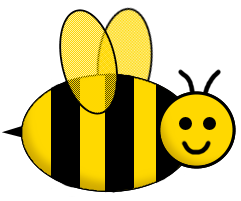An introduction to jewellery making tools
There are three basic tools you need to get started making wire jewellery. They are; a pair of round nose pliers, a pair of chain nose or flat nose pliers and a pair of wire cutters.
What are round nose pliers and what do you do with them?
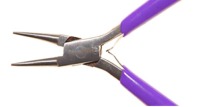
Round Nose Pliers have this name because of the rounded shape of their jaws. They are ideal for making loops and spirals but not so good for gripping.
The jaws taper towards the point which allows you to position your wire to get the size of loop that you want. For a large loop place your wire near the handles, for a small loop place your wire towards the tip of the pliers.
If you want to make consistent sized loops it is a good idea to mark the pliers with a permanent marker so that you always place your wire in the same place. If you don't want to mark your pliers place masking tape around them and mark on the tape instead.
What are chain nose pliers and what do you do with them?
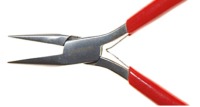
Chain nose pliers are similar to round nose pliers but the inside edge of the jaws is flat. This makes them more suitable for gripping wire as the flat edge gives them more grip.
They are very useful for opening and closing jump rings or for gripping wire. Like round nose pliers, they taper towards the tip, which makes them invaluable for getting into small spaces, for example to tuck in a wire end.
When buying chain nose pliers make sure that the inside edge is not serrated as this can mark your wire.
What are flat nose pliers and what do you do with them?
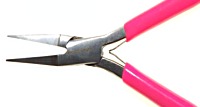
Flat Nose Pliers are very similar to chain nose pliers but the jaws do not taper towards the tip. This gives a greater surface area to hold the wire and hence more grip.
You will probably find them less essential than chain nose pliers but they are useful when you want to hold a piece of wire very securely.
What are wire cutter pliers and what do you do with them?
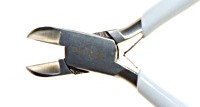
Wire cutters are an essential pair of pliers for the jewellery maker. They allow you to easily trim and cut your wire and headpins to length.
It is important not to use normal wire cutters for cutting memory wire as it can damage them. It is possible to buy special memory wire cutters for cutting memory wire instead.
Crimping Pliers
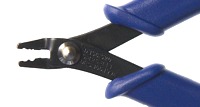
Crimping pliers are used with crimp beads to secure a clasp on the end of beading wire. This involves placing a crimp bead, or tube, on the end of the beading wire, passing the wire through the clasp and then back through the crimp bead. The bead is then crimped onto the bead wire using crimping pliers or chain nose pliers.
The most noticeable thing about crimping pliers is that they have two notches in their jaws. You use the first notch, the one nearest the handles, to 'squash' your crimp bead onto the wire. This turns it into a 'U' shape ideally with one piece of wire in each side of the 'U'. You then use the notch near the end of the pliers to shape this 'U' shaped bead into a round. I find that placing the crimp bead or tube in the outer notch first to turn it into a slight oval makes it easier to keep it in position when you place it in the inner notch and squeeze it together.
Remember though, if your budget is tight, you can always use chain nose pliers to flatten a crimp bead, although you might not get such a neat rounded result.
You can also use crimping pliers to neaten the wire when making a wrapped loop. Place the 'rounding' notch, the one at the end of the pliers, over the cut end of wire and squeeze.
Nylon Nose Pliers
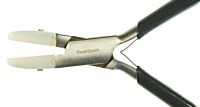
Nylon nose pliers have plastic jaws rather than metal ones. Their big advantage is that the nylon does not mark the wire like metal jawed pliers can do. The jaws of these pliers are quite large however, so they are not suitable for fine, delicate work.
I find these pliers really useful for straightening wire. I hold one end of the wire between the jaws of a pair of flat nose pliers in my non dominant hand and I hold the nylon nose pliers in my other hand. I place the nylon nose pliers on the wire, next to the flat nose pliers, and I grip the handles firmly. I then draw the pliers along the wire to remove any kinks and to straighten it.
